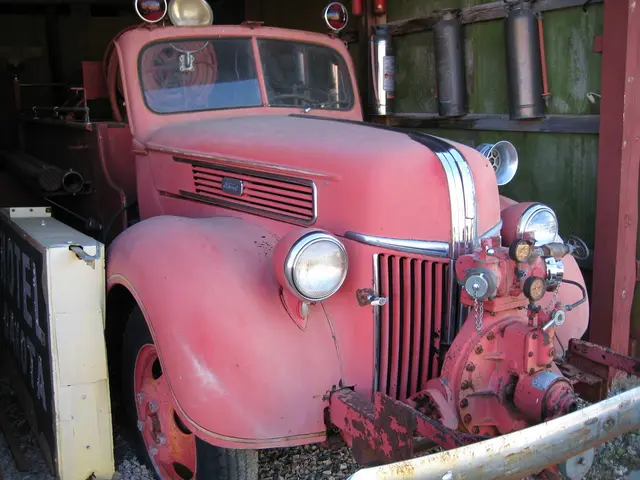The Closed War-Era Liquor Den
Children frolic in hazardous landscape in Ulan-Ude
Stepping into an abandoned distillery is a journey into the past, a testament to the ebb and flow of history. These forgotten havens of spirits have tales of significance woven into their dilapidated walls, frequently linked to regulatory policies and events. Here's an insight into the reasons behind the closure of some of these distilleries:
Stateside Story
- The Roaring Twenties and the Tumultuous Thirties: During the Prohibition era, from 1920 to 1933, the production, sale, and transportation of alcoholic beverages were illegal in the U.S. Under the Eighteenth Amendment, many distilleries were either forced to halt operations temporarily or switch to clandestine methods. Notable cases include Jack Daniel's, which attempted relocating their operations but struggled with maintaining quality, ultimately ceasing production during Prohibition [5].
- The Post-Prohibition Era and World War II: As Prohibition ended in 1933, many distilleries reopened their doors. Yet, during World War II, from 1942 to 1946, whiskey production was again halted due to wartime restrictions. Distilleries such as Jack Daniel's were affected and experienced temporary closure [5].
Beyond the Borders
- Iceland's Prohibition Odyssey: Iceland began Prohibition in 1915, but spirits were legalized in 1933. However, beer remained prohibited until 1989, causing challenges for local distilleries and breweries [3].
- Northern Europe's Experiment with Prohibition: Finland introduced Prohibition in 1919, but it was repealed in 1932 due to an increase in criminal activity. Norway underwent partial Prohibition from 1917 to 1926, which was later abolished [3].
- Canada's Turbulent Tide: Ontario Prohibition was enacted through the Ontario Temperance Act of 1916, prohibiting the sale of alcohol with more than 2.5% alcohol, causing challenges for distilleries in the region [3].
These closures and changes were mostly the result of regulatory modifications, economic conditions, or wartime policies. Many distilleries resumed operations once restrictions were lifted or when policies changed, resurrecting the dance of spirits and the history embedded within these once bustling establishments. [5][3]
[3] J. Lundkamp (2017). Alcohol without alcohol: breweries, distilleries, and other beverage manufacturers in Canada's liquor control system. Canada's Historical Resources, (41), 73-87.
[5] J. F. Martin III, M. H. Reuther, & G. H. Miller (2003). Distilleries, Prohibition, and the Decline of Craft Distilling in Tennessee. The Journal of Southern History, (69), 313-343.
In a stark contrast, while some war-era distilleries closed due to regulatory policy changes like Prohibition and wartime restrictions, others embraced the chance to focus on science, health-and-wellness, sports, and other flourishing industries. For instance, when competition shifted from liquor to recreational activities during Prohibition, many distilleries in the US transitioned to produce merchandise related to health-and-wellness, sports, or science. Similar transformations can be seen in other countries, as distilleries in Iceland and Norway leveraged the temporarily banned sale of alcohol to establish their presence in the sports industry.








